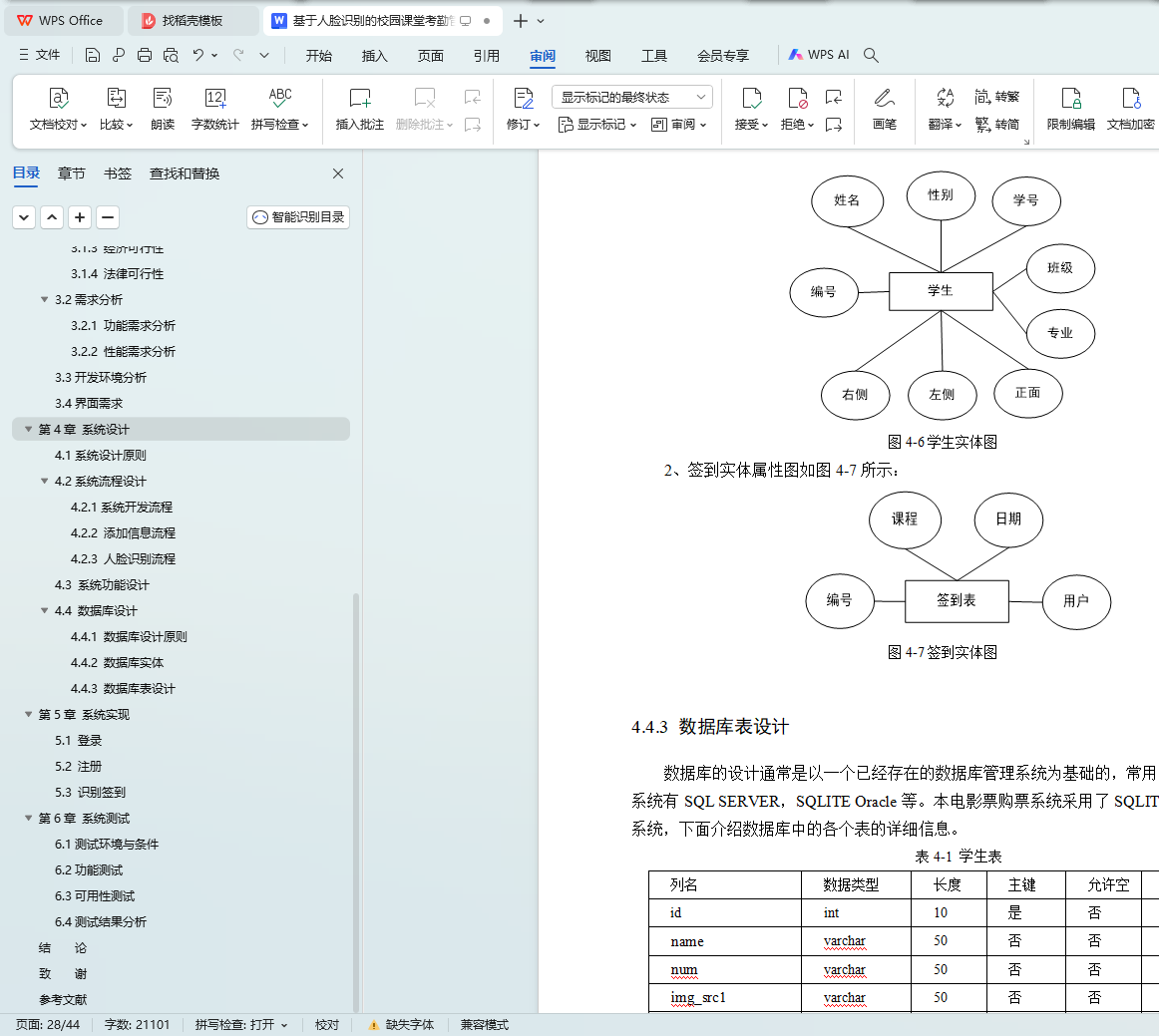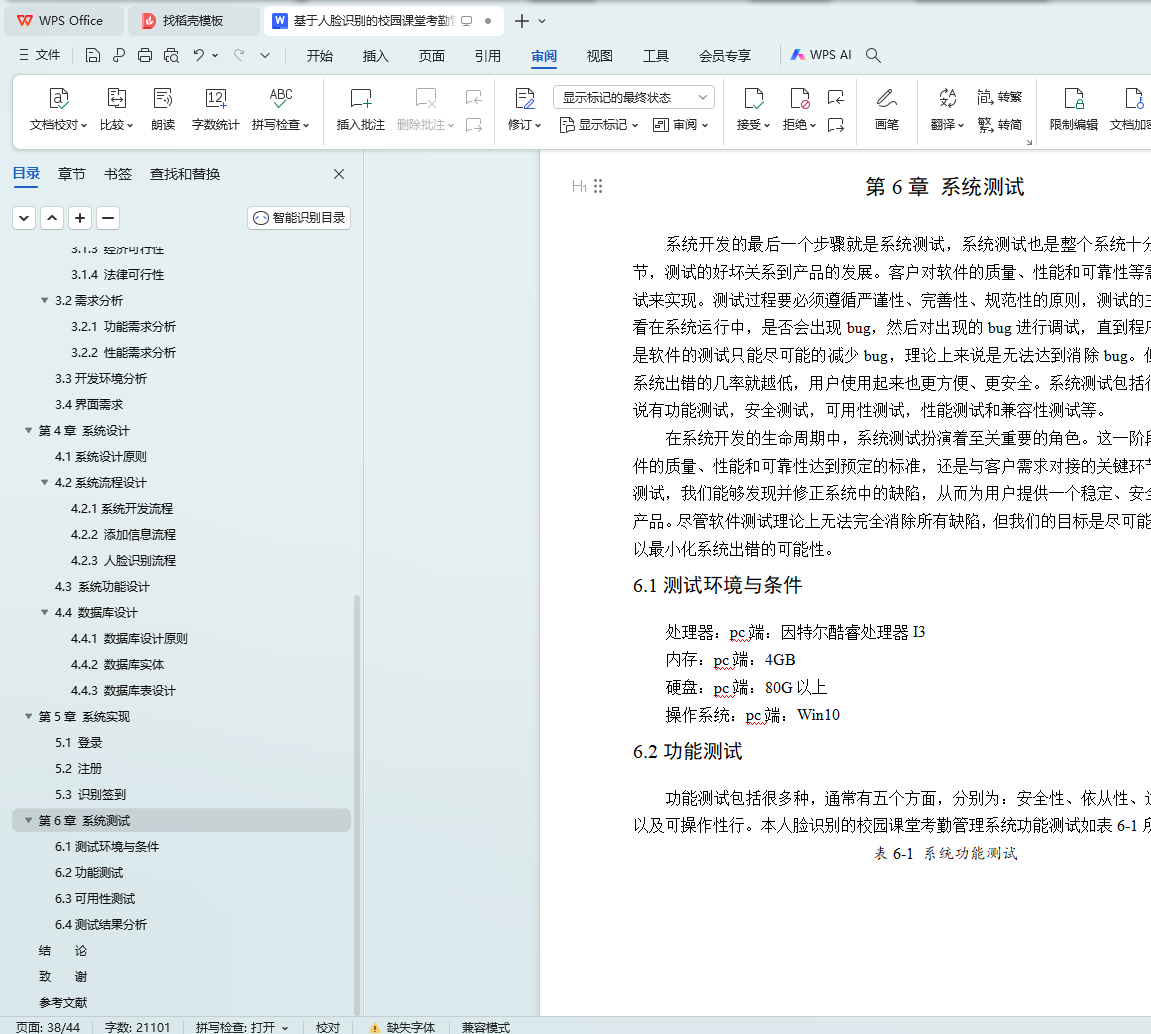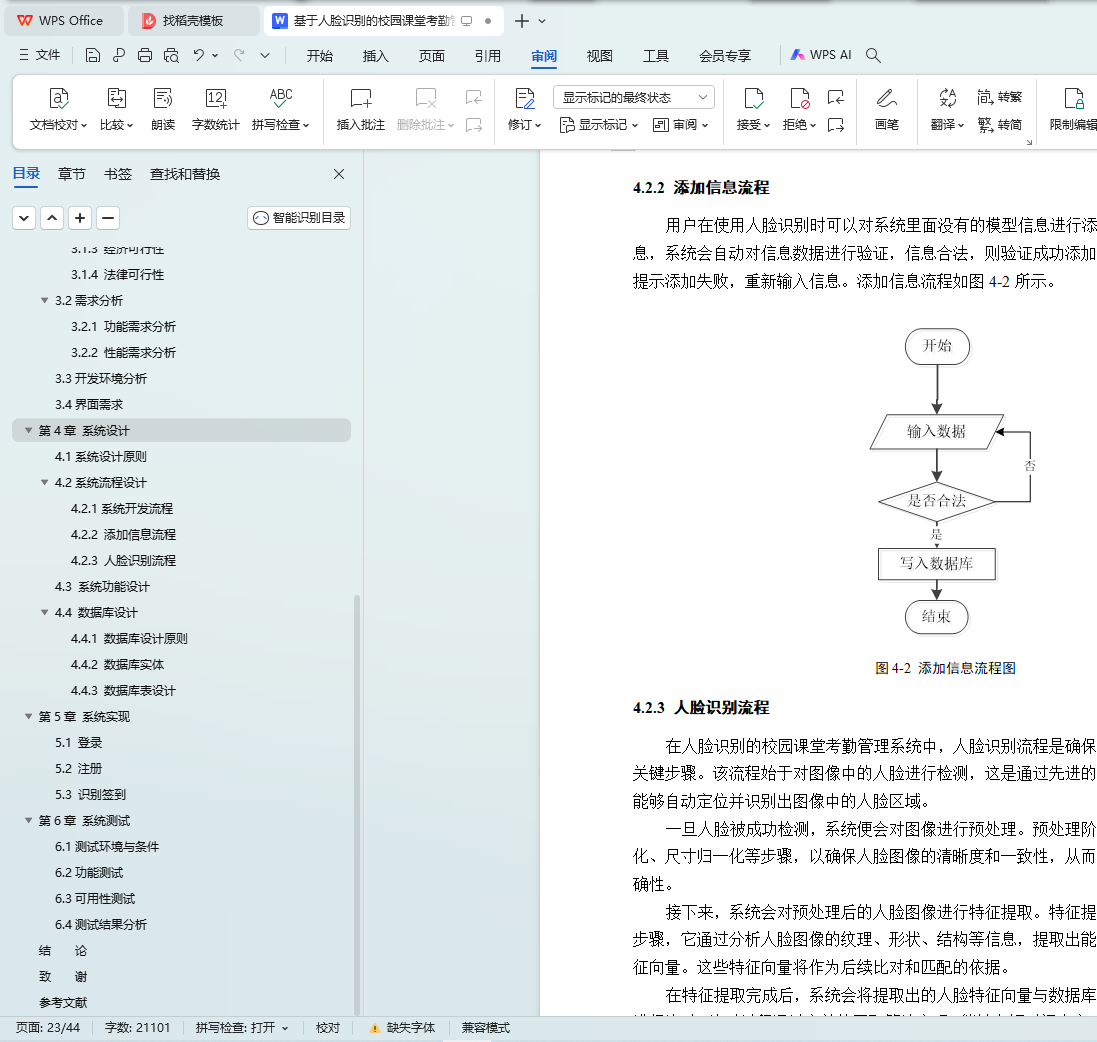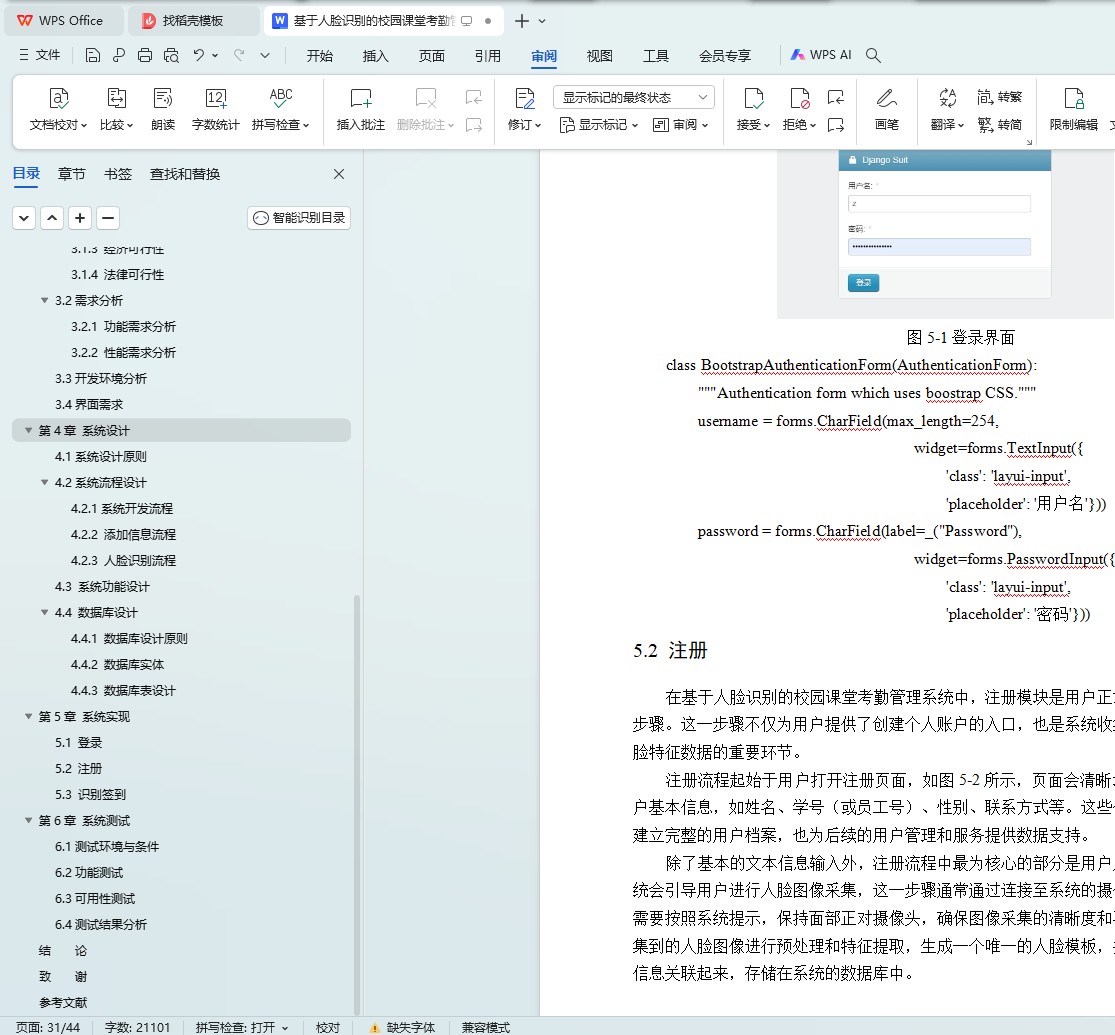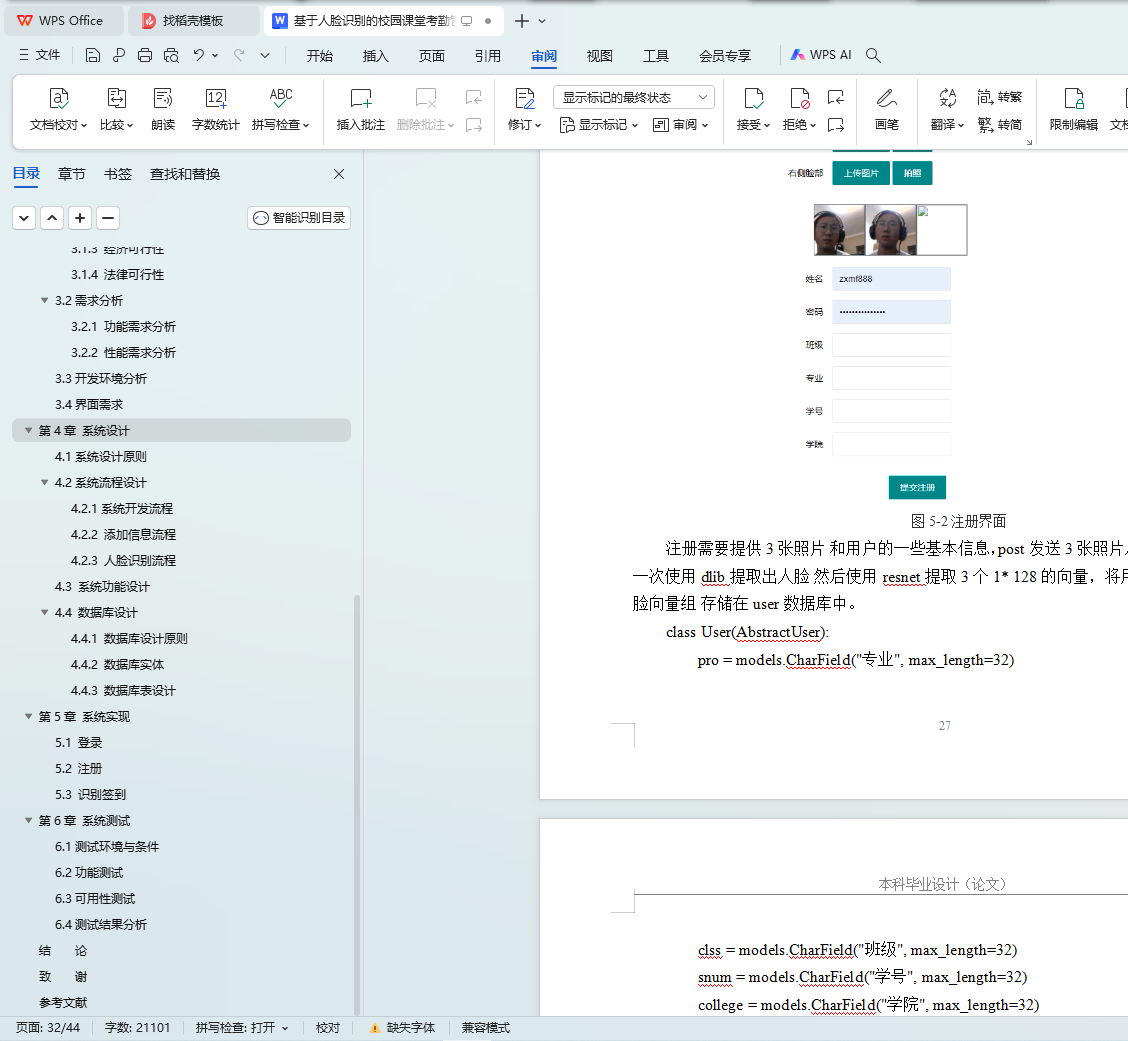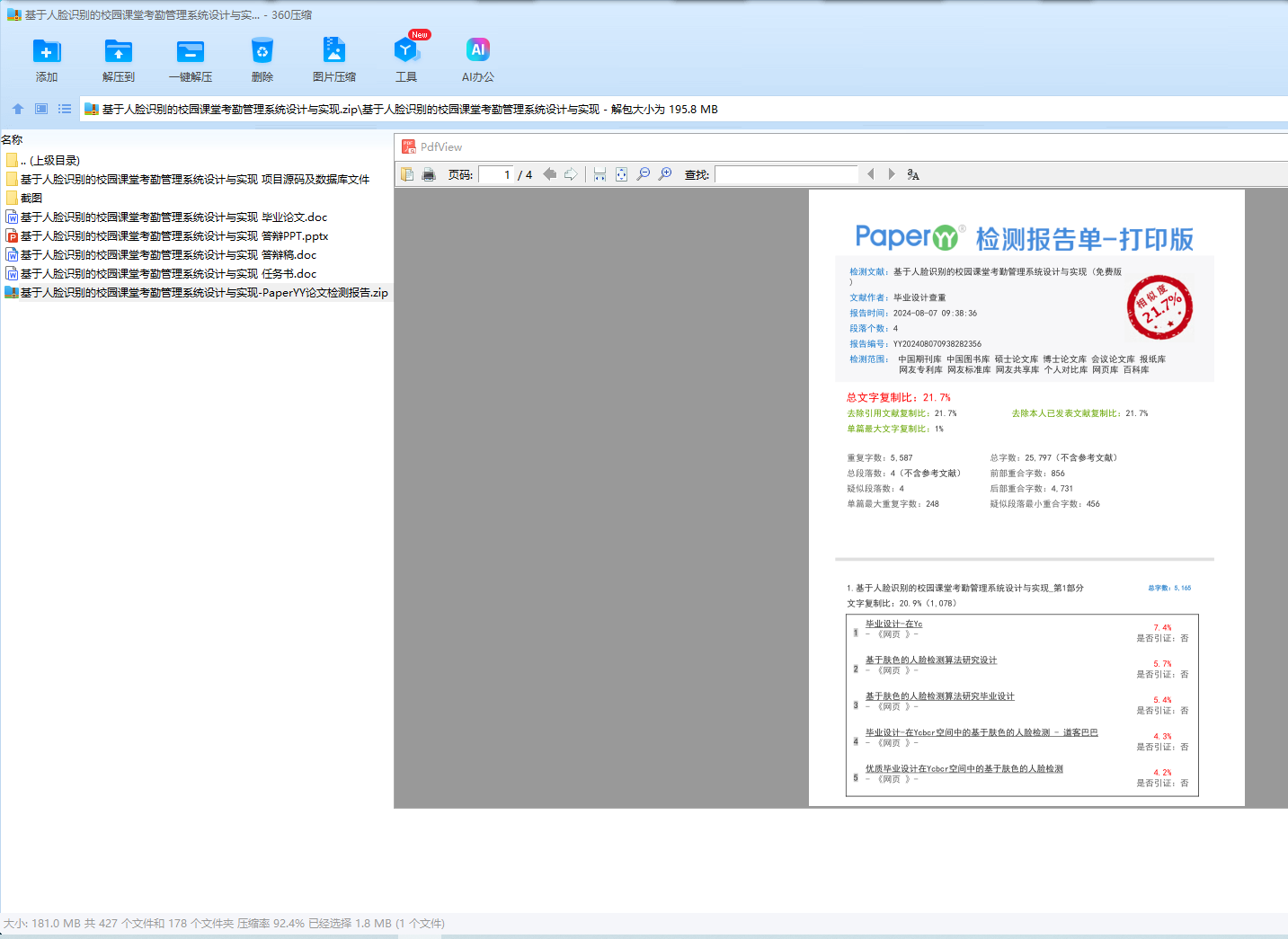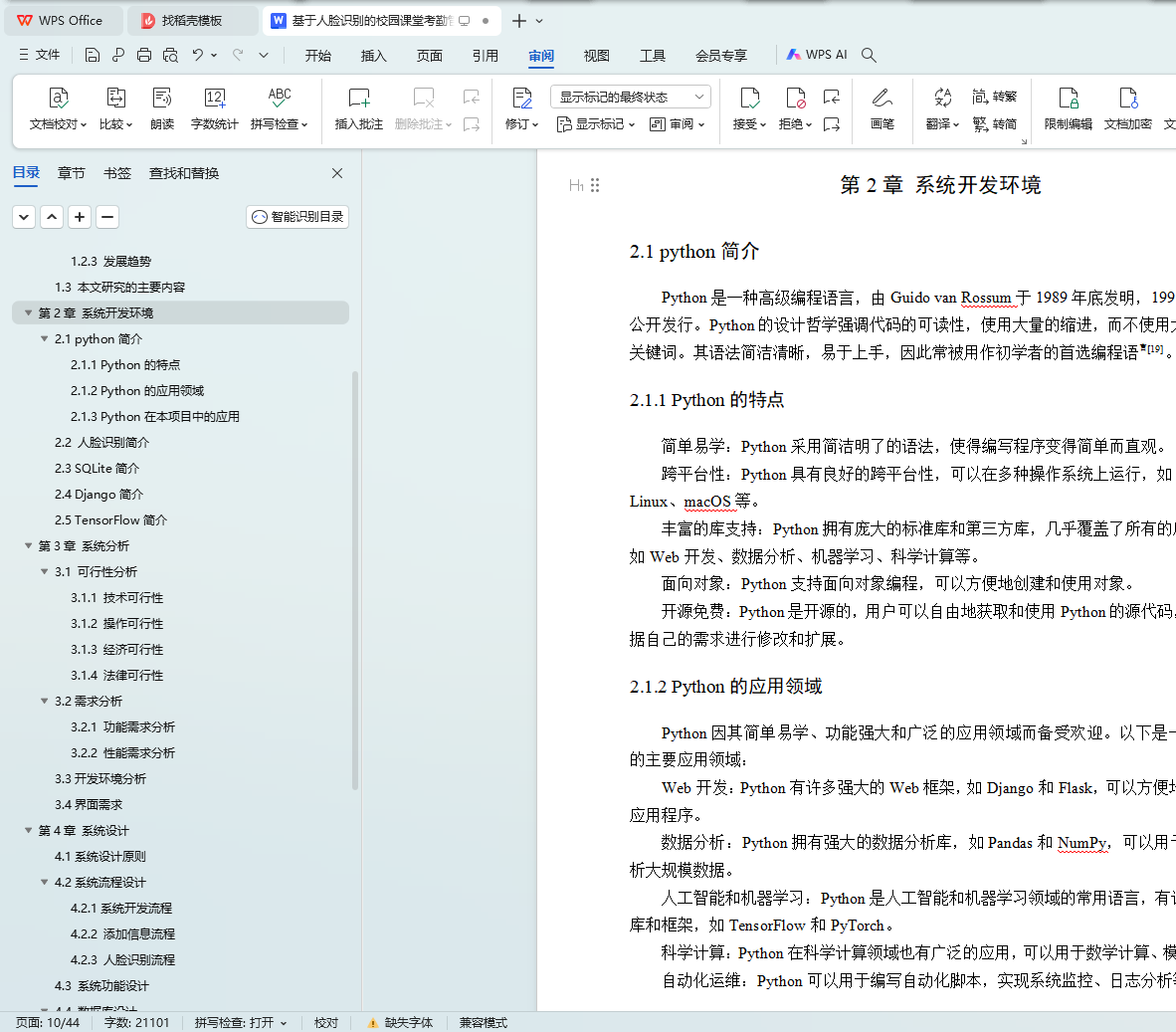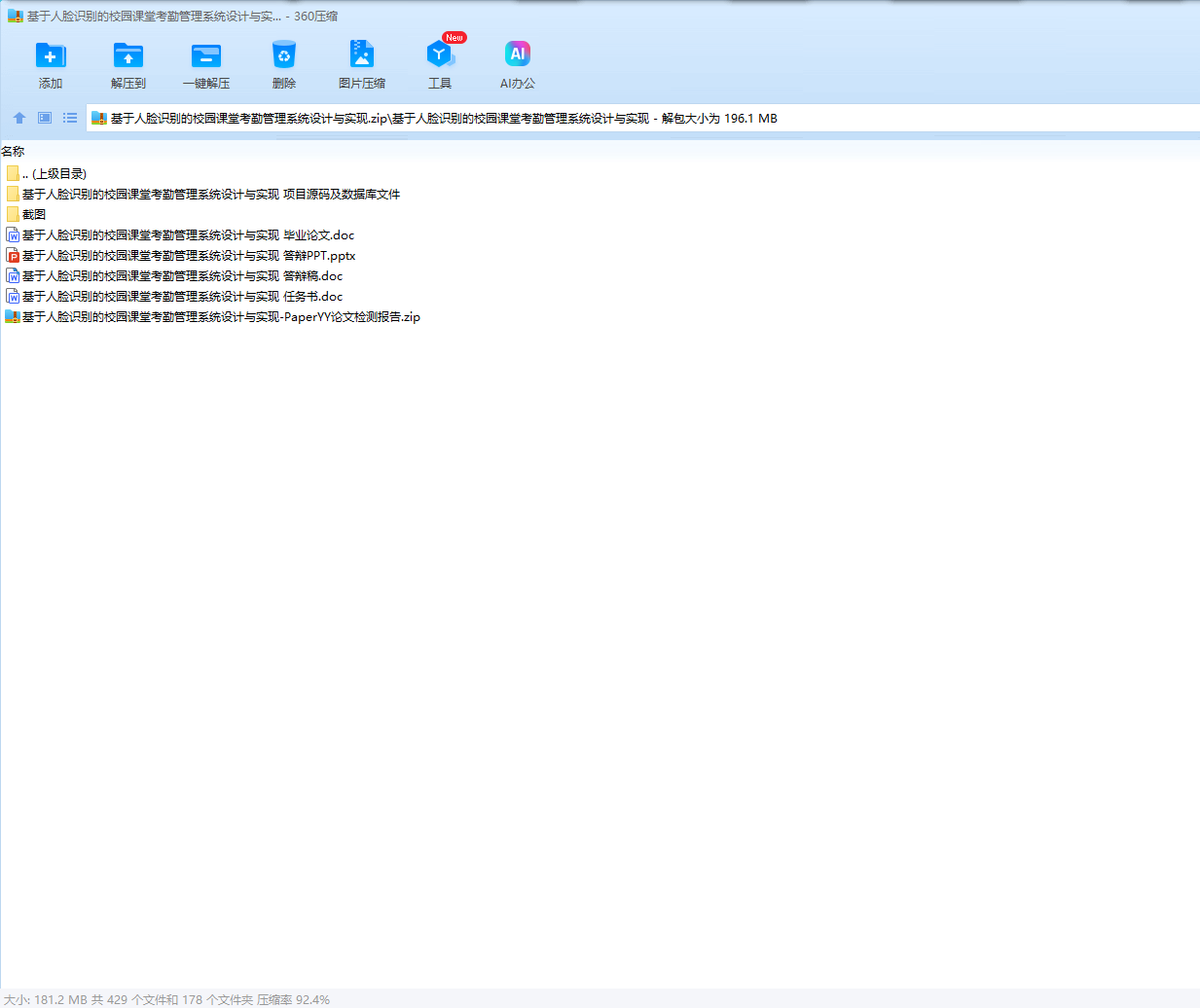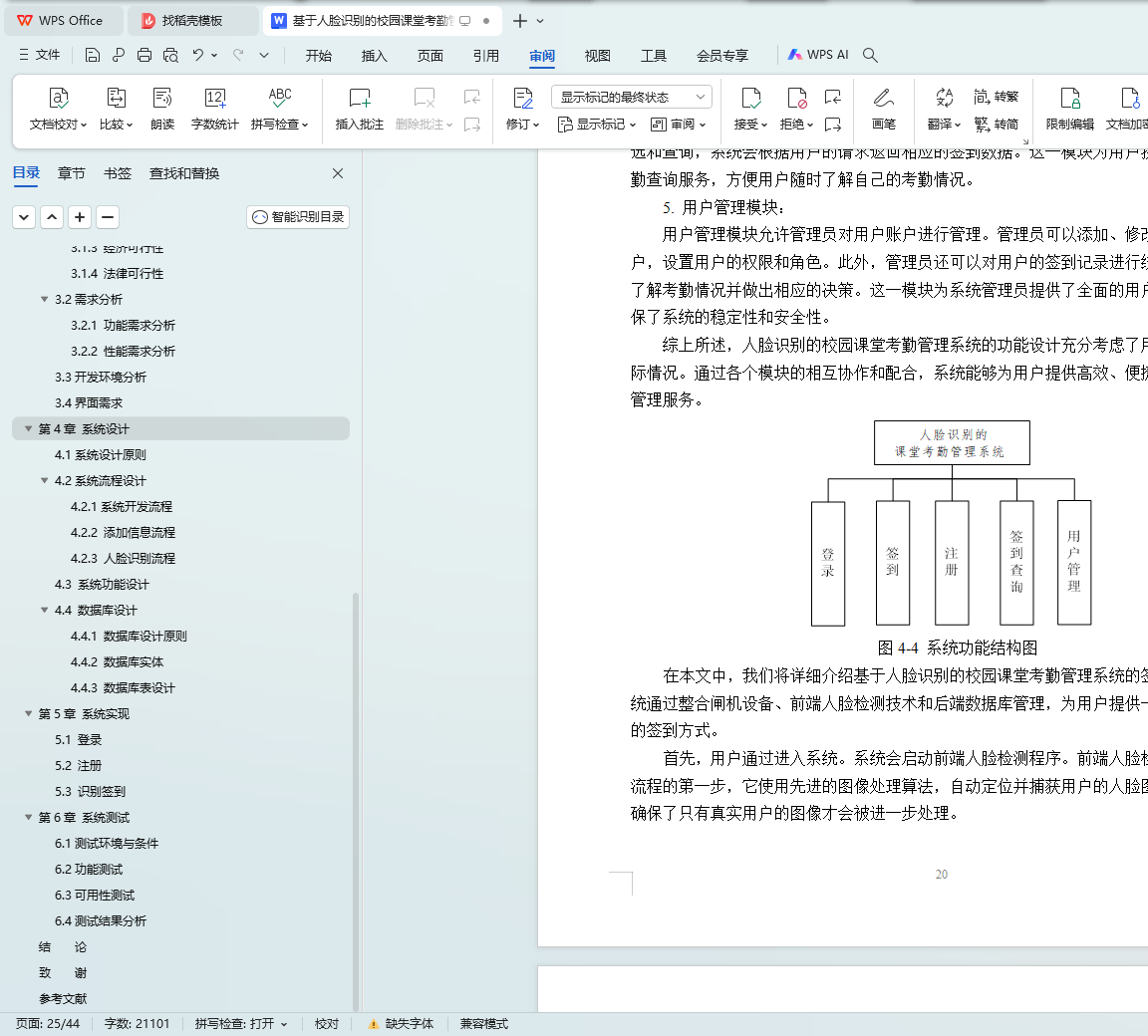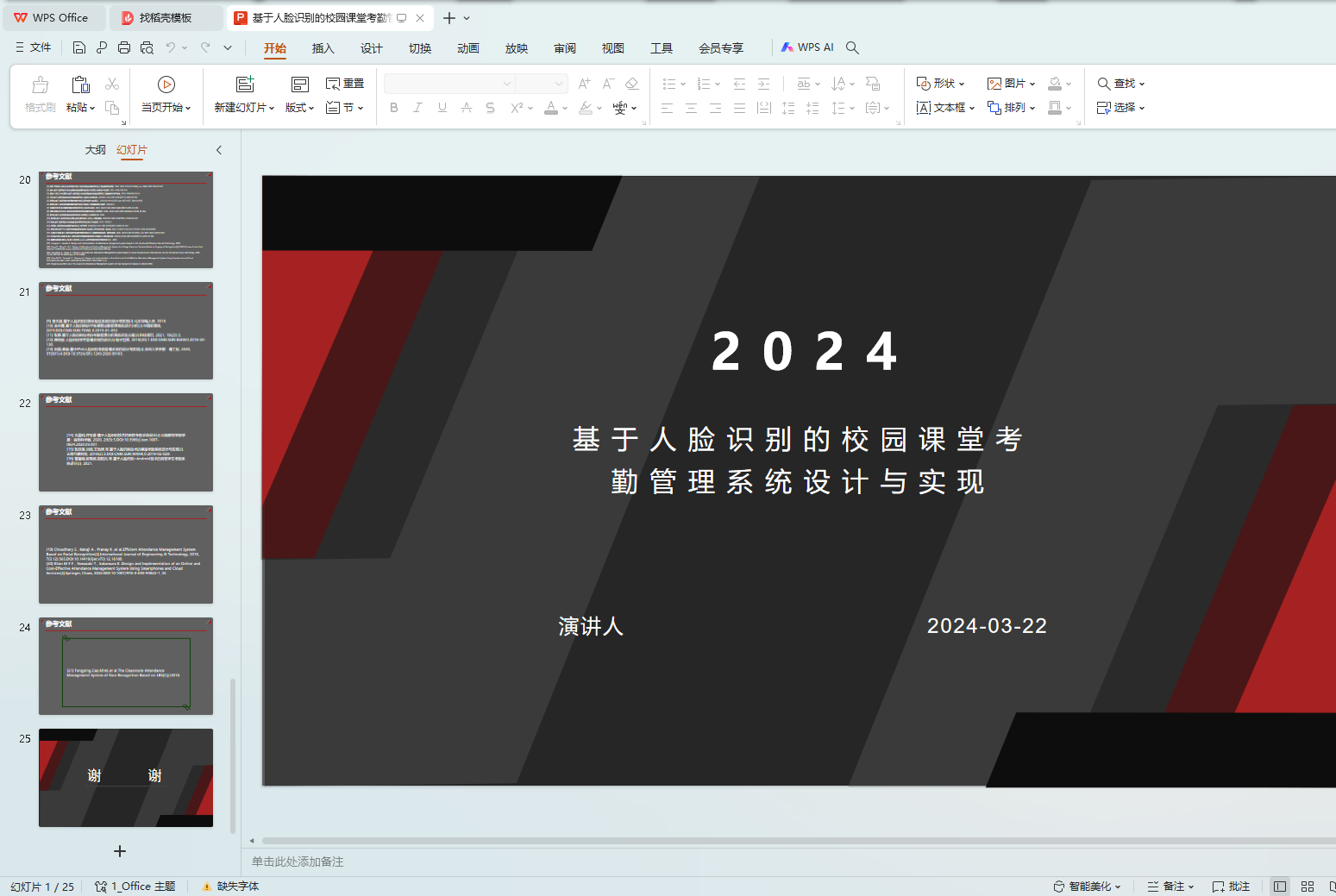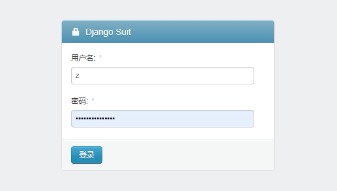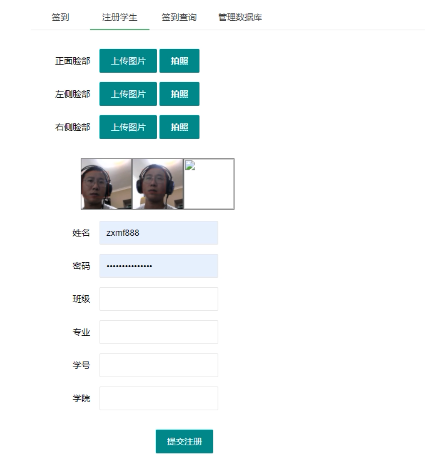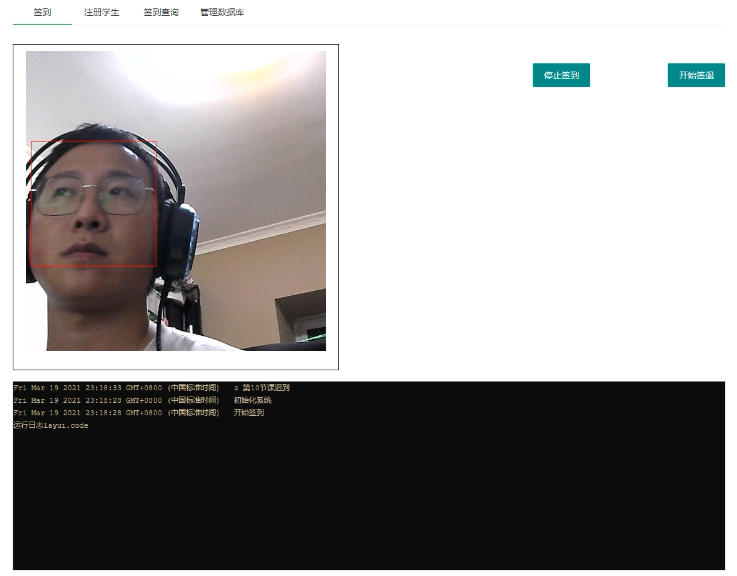基于人脸识别的校园课堂考勤管理系统设计与实现 毕业论文+任务书+答辩稿+答辩PPT+论文检测查重报告+Python项目源码及数据库文件
摘 要
源于当前教育领域对智能化管理和个性化服务的迫切需求,以及人工智能和计算机视觉技术在身份识别和安全监控领域的快速发展。随着人脸识别技术的成熟和普及,将其应用于校园课堂考勤管理成为一种可行且高效的解决方案。选题还结合了当前软件开发和Web技术的发展趋势,特别是Django和Celery等成熟框架在Web应用开发中的广泛应用,以及SQLite作为轻量级数据库在小型项目中的实用性。因此,本选题旨在结合现代技术,为校园课堂考勤管理提供一个智能、高效、便捷的解决方案,并以此为契机,探讨人工智能在教育领域的应用前景和挑战。
本文设计并实现了一个基于人脸识别的校园课堂考勤管理系统。该系统以Python 3.6为开发语言,利用Tensorflow平台,结合Django和Celery框架进行后端开发。在前端,通过OpenCV.js与HTML的结合,实现了实时的摄像头人脸检测功能。后端则通过Django接收前端发送的人脸检测任务,并利用Celery进行异步处理,包括人脸特征提取和分类。系统采用SQLite作为数据库,存储用户信息和考勤数据。在人脸识别技术上,本系统使用dlib库进行人脸提取,并通过resnet网络进行人脸特征提取。最后,通过计算欧氏距离来分类和识别不同人脸,从而实现用户注册、签到以及用户管理等功能。该系统不仅提高了课堂考勤的效率和准确性,也为校园智能化管理提供了新的解决方案。
关键词:人脸识别;校园课堂考勤;Django;Tensorflow;SQLite;实时检测
Abstract
It stems from the urgent need for intelligent management and personalized services in the current education field, as well as the rapid development of artificial intelligence and computer vision technology in the field of identity identification and security monitoring. With the maturity and popularization of face recognition technology, its application to campus classroom attendance management has become a feasible and efficient solution. The topics also combines current trends in software development and Web technologies, in particular the wide use of established frameworks such as Django and Celery in the context of Web applications development, and the utility of SQLite as a lightweight database in small projects. Therefore, this topic aims to combine modern technology to provide an intelligent, efficient and convenient solution for campus classroom attendance management, and take this as an opportunity to explore the application prospects and challenges of artificial intelligence in the field of education.
This paper designs and implements a campus classroom attendance management system based on face recognition. The system uses Python 3.6 as the development language, using the Tensorflow platform, combined with the Django and Celery framework for back-end development. In the front end, the combination of OpenCV.js and HTML realizes the real-time camera face detection function. The back-end receives the face detection task sent by the front-end through the Django, and uses the Celery for asynchronous processing, including face feature extraction and classification. The system uses SQLite as a database to store user information and attendance data. In the face recognition technology, the system uses the dlib library for face extraction, and through the resnet network for face feature extraction. Finally, the Euclidean distance is calculated to classify and identify different faces, so as to realize user registration, check-in and user management functions. The system not only improves the efficiency and accuracy of the classroom attendance, but also provides a new solution for the intelligent campus management.
Key words: face recognition; campus classroom attendance; Django; Tensorflow; SQLite; real-time detection
目 录

